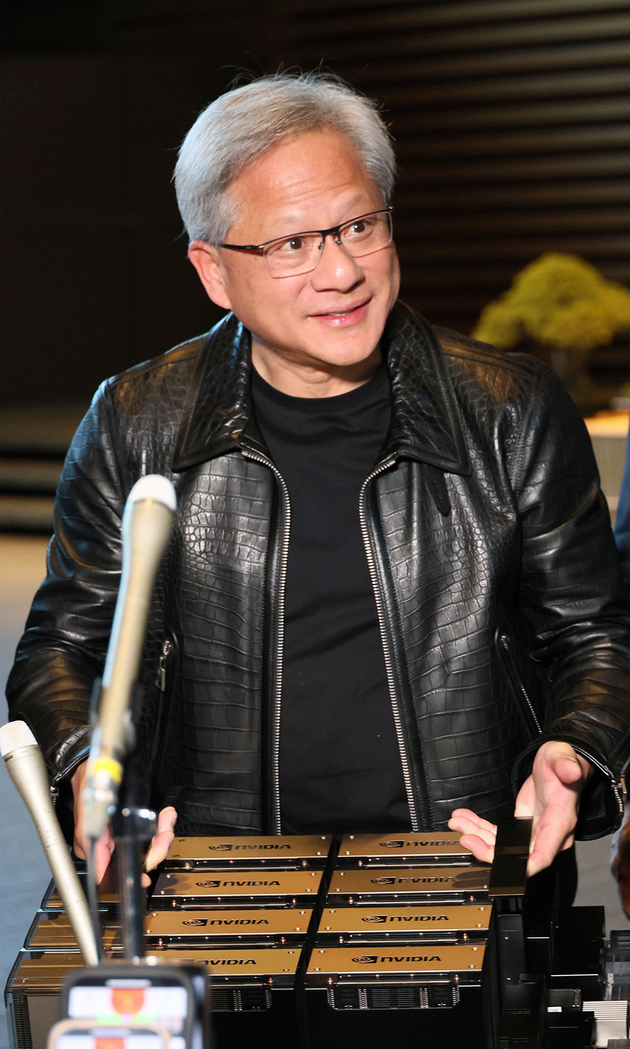
Photo/VCG
At the heart of Silicon Valley, NVIDIA CEO Jensen Huang, clad in his signature black leather jacket, took the stage at the San Jose Convention Center, not unlike a rock star. He humorously clarified that despite the grand setting, this was a developers’ conference, not a concert. The GPU Technology Conference (GTC) is often likened to the “Woodstock of AI,” where the rhythm is set by chips, algorithms, computer architecture, and mathematics.
NVIDIA, known as the “shovel seller” in the AI era, showcased numerous breakthroughs at GTC. The highlight was the new GPU based on the Blackwell architecture, boasting four times the performance and twenty-five times the energy efficiency of its predecessor, earning it the title of “strongest AI chip.” NVIDIA also introduced a comprehensive AI microservice, offering a full-stack solution from application software to hardware programming.
Huang emphasized the concept of “AI factories,” urging businesses to rethink data centers and AI tools. He sees the dawn of a new industrial revolution, with data as the raw material and valuable digital tokens as the output, processed and refined by data centers. He estimates this market could reach $250 billion annually.
The GTC also featured the unveiling of the “AI nuclear bomb,” the Blackwell GPU, with training performance four times that of the previous Hopper GPU, inference performance thirty times better, and energy efficiency about twenty-five times greater. This rapid advancement in GPU performance led NVIDIA’s senior scientist Jim Fan to proclaim the birth of a “new Moore’s Law.”
For example, training a model with 1.8 trillion parameters (the scale of GPT-4) would require 8,000 GPUs, 15 megawatts of power, and about 90 days using the Hopper architecture. With Blackwell, only 2,000 GPUs and 4 megawatts would be needed, significantly reducing energy consumption.
Companies expected to adopt the Blackwell series include Amazon, Google, Meta, Microsoft, OpenAI, Tesla, and xAI. Huang revealed that the new GPUs are priced between $30,000 to $40,000, likely boosting NVIDIA’s revenue further.
NVIDIA also launched NIM (NVIDIA Inference Microservices), simplifying the building and deployment of AI applications for developers and accelerating the practical application of AI technology.
Additionally, NVIDIA showcased various AI applications, such as ESMFold for predicting protein structures, the humanoid robot base model Groot, the humanoid robot chip Jetson Thor, a vehicular computing platform in collaboration with BYD, the Apple Vision Pro application on the Omniverse platform, and a digital twin of Earth’s climate.
The GTC was warmly received by Wall Street. Analysts from JPMorgan, Bank of America, and Goldman Sachs praised the Blackwell architecture, maintaining high target prices and “buy” ratings, citing NVIDIA’s innovation and customer relationships as drivers for continued growth and competitive advantage.
As NVIDIA’s stock surged, analysts like Dan Ives from WedBush Securities believe the AI boom is just beginning, predicting a decade-long spending wave in AI, with NVIDIA leading the charge. Ives estimates that AI-related expenditures will account for 8% to 10% of corporate IT budgets in 2024, up from less than 1% in 2023.
The GTC also featured presentations from distinguished guests like Stanford University’s Professor Fei-Fei Li and OpenAI’s COO Brad Lightcap, exploring breakthroughs in AI and accelerated computing.


 川公网安备 51019002001991号
川公网安备 51019002001991号





